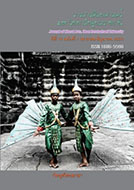สวนยางพาราในกัมพูชา กับปฏิบัติการยื้อแย่งที่ดินจากกลุ่มชนชายขอบ
Main Article Content
บทคัดย่อ
บทคัดย่อภาษาไทยไม่สมบูรณ์
Rubber Plantation in Cambodia and Land Grabbed from the Marginal People
This research has a motivation from the rapid expansion and become to the commercial tree of the rubber tree (Hevea Brasiliensis) in Cambodia which impacted to the forest and agricultural land of the local people. This research project has 3 objectives; firstly, to study the history and development of the rubber tree which become Cambodia’s main commercial tree, secondly, to study the processes or methods which the Cambodia State use for promoted the rubber tree become an legal commercial tree and thirdly, to study the impacts of policies and the rubber tree plantation policy to the indigenous people and their adaptations. The study found that the rapid expansion of rubber tree until become to the commercial tree of Cambodia is directly related to the emergence and expansion of capitalism or opening economy policy in the Mekong Sub-region through the working between the capital and the state. Then Cambodia nowadays was the “contesting area” of both national capitals and transnational capitals which claimed the development discourse for exploited the area through the territorialization process practice to transformed natural resource (land) become the capital. From that process, its have impacted to the local people who had been used those area both for their residence and their survival. Thus in many areas we found the resistance from the local people, however from many case studies we found that the expansion of rubber plantation make the local people become the marginal groups.


